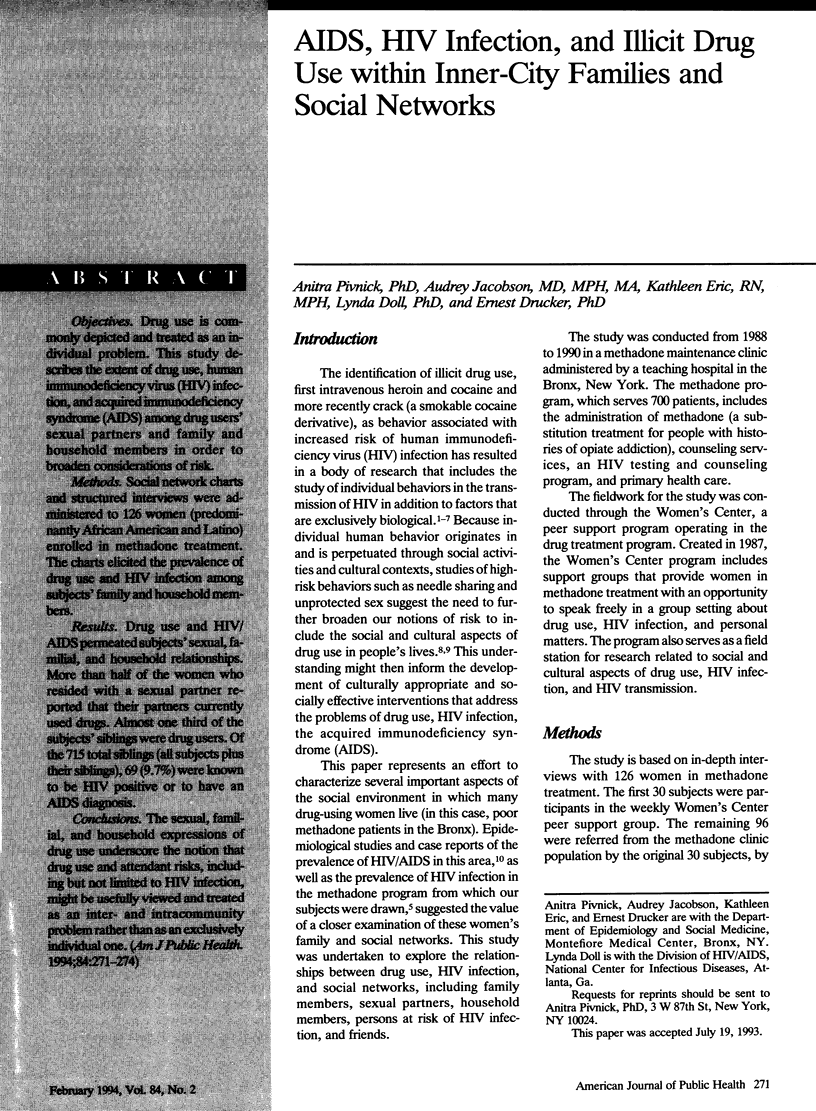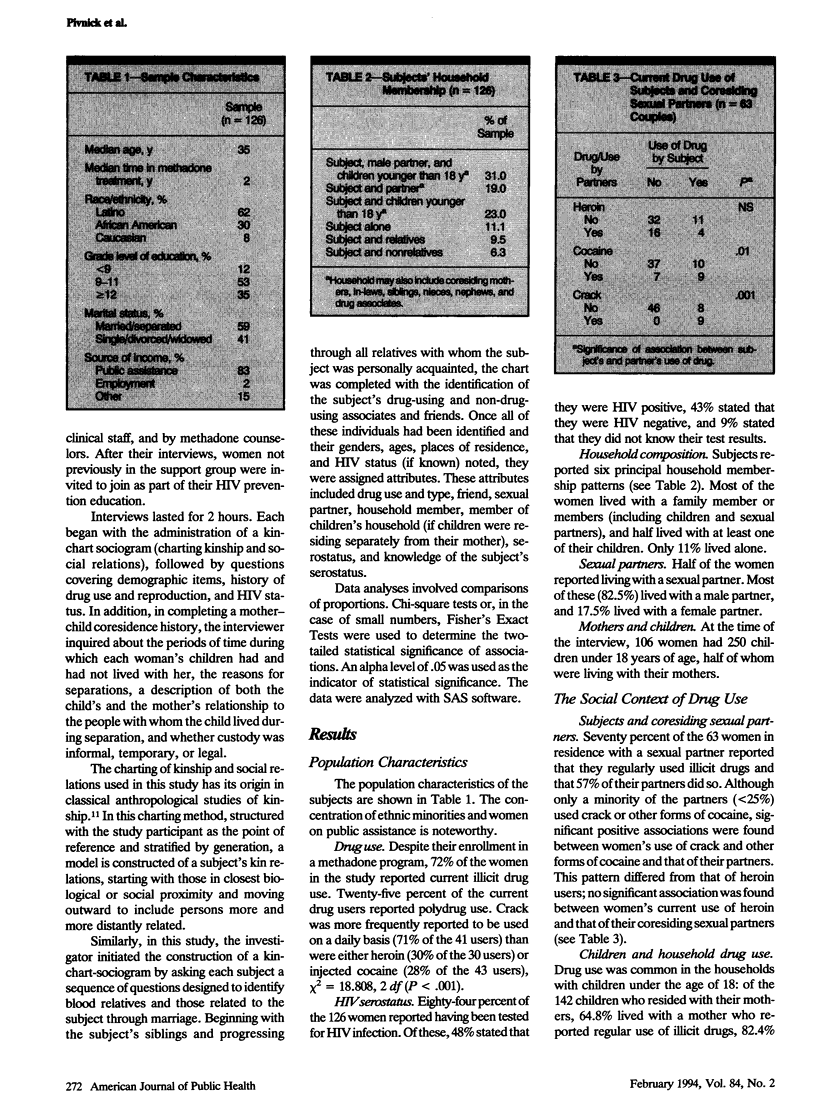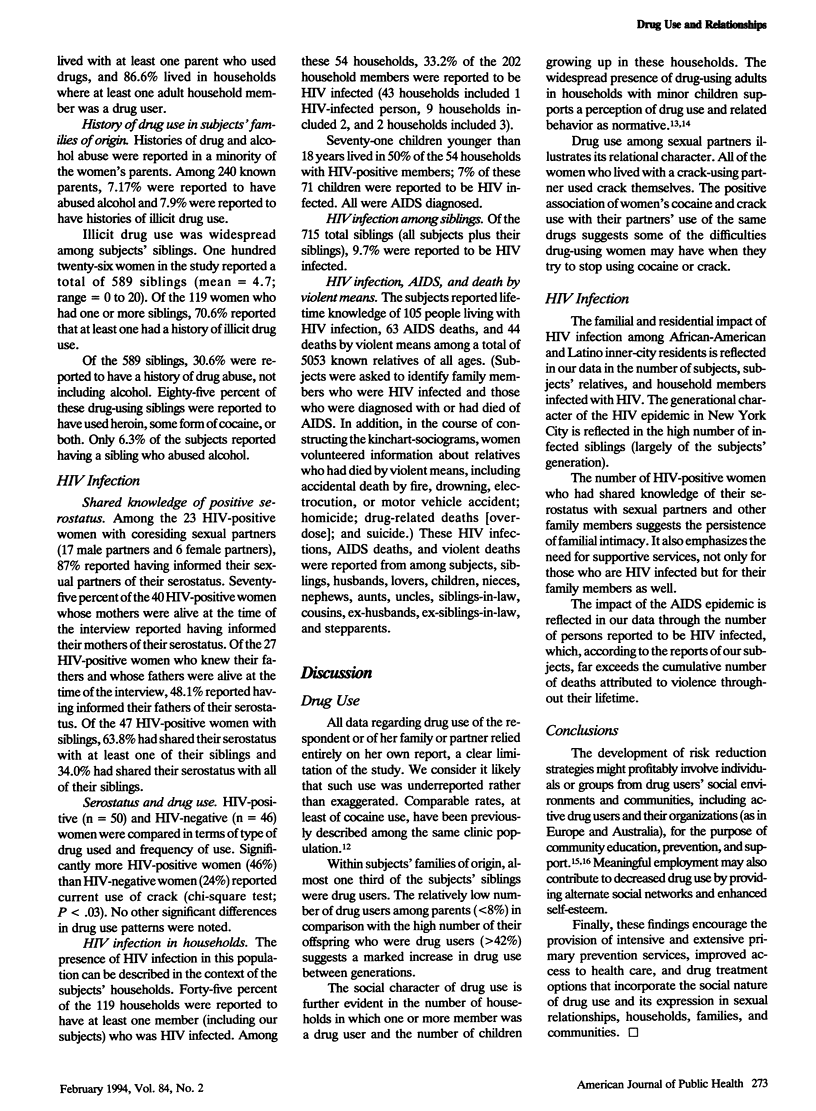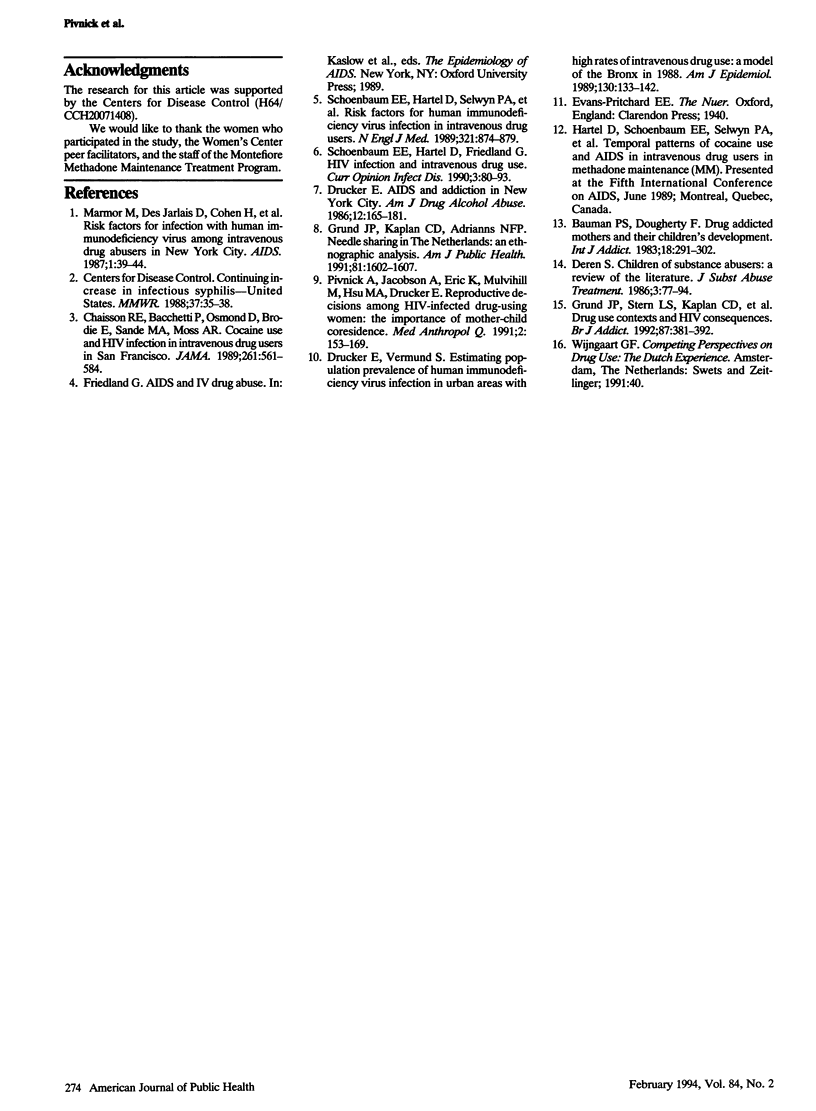Abstract
OBJECTIVES. Drug use is commonly depicted and treated as an individual problem. This study describes the extent of drug use, human immunodeficiency virus (HIV) infection, and acquired immunodeficiency syndrome (AIDS) among drug users' sexual partners and family and household members in order to broaden considerations of risk. METHODS. Social network charts and structured interviews were administered to 126 women (predominantly African American and Latino) enrolled in methadone treatment. The charts elicited the prevalence of drug use and HIV infection among subjects' family and household members. RESULTS. Drug use and HIV/AIDS permeated subjects' sexual, familial, and household relationships. More than half of the women who resided with a sexual partner reported that their partners currently used drugs. Almost one third of the subjects' siblings were drug users. Of the 715 total siblings (all subjects plus their siblings), 69 (9.7%) were known to be HIV positive or to have an AIDS diagnosis. CONCLUSIONS. The sexual, familial, and household expressions of drug use underscore the notion that drug use and attendant risks, including but not limited to HIV infection, might be usefully viewed and treated as an inter- and intracommunity problem rather than as an exclusively individual one.
Full text
PDF



Selected References
These references are in PubMed. This may not be the complete list of references from this article.
- Bauman P. S., Dougherty F. E. Drug-addicted mothers' parenting and their children's development. Int J Addict. 1983 Apr;18(3):291–302. doi: 10.3109/10826088309039348. [DOI] [PubMed] [Google Scholar]
- Chaisson R. E., Bacchetti P., Osmond D., Brodie B., Sande M. A., Moss A. R. Cocaine use and HIV infection in intravenous drug users in San Francisco. JAMA. 1989 Jan 27;261(4):561–565. [PubMed] [Google Scholar]
- Deren S. Children of substance abusers: a review of the literature. J Subst Abuse Treat. 1986;3(2):77–94. doi: 10.1016/0740-5472(86)90056-5. [DOI] [PubMed] [Google Scholar]
- Drucker E. AIDS and addiction in New York City. Am J Drug Alcohol Abuse. 1986;12(1-2):165–181. doi: 10.3109/00952998609083750. [DOI] [PubMed] [Google Scholar]
- Drucker E., Vermund S. H. Estimating population prevalence of human immunodeficiency virus infection in urban areas with high rates of intravenous drug use: a model of the Bronx in 1988. Am J Epidemiol. 1989 Jul;130(1):133–142. doi: 10.1093/oxfordjournals.aje.a115304. [DOI] [PubMed] [Google Scholar]
- Grund J. P., Kaplan C. D., Adriaans N. F. Needle sharing in The Netherlands: an ethnographic analysis. Am J Public Health. 1991 Dec;81(12):1602–1607. doi: 10.2105/ajph.81.12.1602. [DOI] [PMC free article] [PubMed] [Google Scholar]
- Grund J. P., Stern L. S., Kaplan C. D., Adriaans N. F., Drucker E. Drug use contexts and HIV-consequences: the effect of drug policy on patterns of everyday drug use in Rotterdam and the Bronx. Br J Addict. 1992 Mar;87(3):381–392. doi: 10.1111/j.1360-0443.1992.tb01939.x. [DOI] [PubMed] [Google Scholar]
- Marmor M., Des Jarlais D. C., Cohen H., Friedman S. R., Beatrice S. T., Dubin N., el-Sadr W., Mildvan D., Yancovitz S., Mathur U. Risk factors for infection with human immunodeficiency virus among intravenous drug abusers in New York City. AIDS. 1987 May;1(1):39–44. [PubMed] [Google Scholar]
- Schoenbaum E. E., Hartel D., Selwyn P. A., Klein R. S., Davenny K., Rogers M., Feiner C., Friedland G. Risk factors for human immunodeficiency virus infection in intravenous drug users. N Engl J Med. 1989 Sep 28;321(13):874–879. doi: 10.1056/NEJM198909283211306. [DOI] [PubMed] [Google Scholar]


